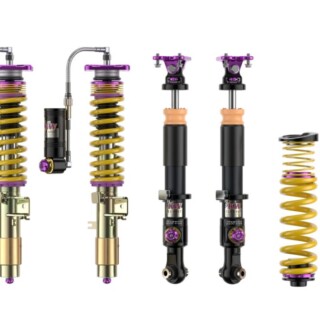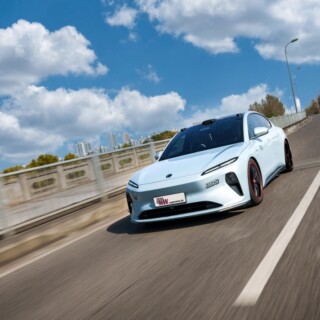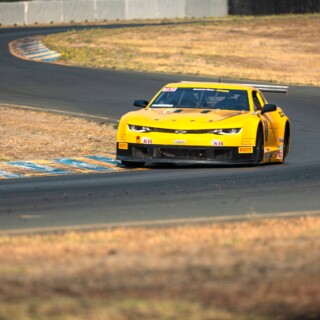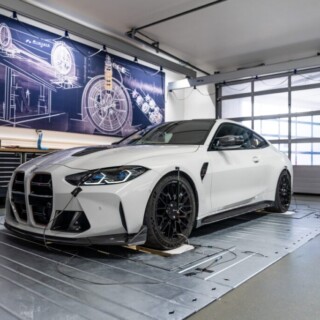
When the Dodge Charger Hellcat hit the scene back in 2015, car enthusiasts were floored by its jaw-dropping price tag of just $62,300. How could a car with such impressive specs, boasting a whopping 717 HP, be so affordable? Skeptics were left scratching their heads, convinced that there must be a catch hidden somewhere.

Indeed, there was a catch to the Hellcat’s affordable price: driving it is no piece of cake, and it takes a skilled driver to handle its sheer power safely. Unlike other high-performance sedans such as the Audi RS7 Performance, BMW M5, and Porsche Panamera, the Dodge Charger SRT Hellcat demands a level of expertise that only comes from experience behind the wheel. The Charger SRT Hellcat is not for the faint of heart, and its true potential can only be unlocked by a driver who knows precisely what they’re doing.

The name “Hellcat” says it all: The Charger SRT Hellcat is powered by a 6.2-liter HEMI V8 engine with a factory-installed supercharger that delivers an impressive 717 horsepower and 881 Newton-meters of torque. However, some influencers and motor journalists have warned that if the electronic control system is set too loose, the four-door sedan can be difficult to handle when accelerating aggressively, resulting in a wild ride that could leave you feeling like you’re crossing into Hellcat territory.

Beyond 93 mph, the tires of the powerful sedan can lose grip. No wonder Sebastian Bader from S. Bader Karosserie und Lack mounted overwidth Schmidt FS-line wheels in 21 inches. To fit the ZR21 and 355/25 ZR 21 wheels perfectly under the fenders, a body kit widens the Dodge Charger SRT Hellcat chassis.

Equipped with a comprehensive body kit, the fenders boast a bulge of 60 millimeters on each side at the front axle. While at the rear axle, they bulge out with impressive 90 millimeters on each side. The result is an aggressive Über-Stance that lets everyone know this car is no pussycat.

Furthermore, the rear apron has a front spoiler sword, side sills, and winglets. What’s also new is the trunk lid with its oversized tear-off edge. By the way, Sebastian offers his wide body kit with a material certificate in his online shop.

The motor hood originates from the Dodge Charger SRT Hellcat “Redeye.” Next to two centered air inlets, there are two other air inlets.

In a now-defunct issue of TopGear Germany, a test editor made a startling conclusion about the Dodge Charger SRT Hellcat: the car was said to roll heavily, drive bumpily, and be downright frightening to operate. It’s a harsh criticism, but one that highlights the intense power and high-performance nature of this beast of a machine.

Front axle struts of the KW V4 for the Dodge Charger SRT Hellcat
Sebastian Bader’s Charger is no longer the “frightening” and “bumpy” ride described by the test editor from TopGear Germany. This is all thanks to the KW V4 coilover kit, which has transformed the Hellcat into a stable and secure speed machine that can hit top speeds of 199 mph with ease. The KW V4 coilover kit is a game-changer for anyone seeking a more confidence-inspiring driving experience in their Dodge Charger SRT Hellcat, and has elevated the car’s performance to a whole new level.

Just like our KW V4 Clubsport coilover kit, the KW V4 also feature three-way adjustable dampers. At a glance, the KW V4 coilover kit for the Hellcat may appear quite similar to our KW Clubsport coilovers with its racing springs, preload springs, strut bearings, and reservoirs.

Aluminum top mounts at the front axle strut
The difference between both is in the details: In our KW V4 coilover kit of the so-called “Street Performance” category, we use different spring rates for the main and helper springs. Furthermore, the aluminum top mounts of the V4 are rubber dampened. In the Clubsport, we use Unibal top mounts.

KW V4 Clubsport three-way and KW V4 lowspeed and highspeed compression valves with TVCLH-A (twin valve compression lowspeed and highspeed adjustable) technology
The interior of the damper in a KW V4 Clubsport and a KW V4 coilover differs. Both coilovers use different valve springs, shims, claw springs, valve drills, and other components, resulting in varying damper forces and damping responsiveness.

The compression valves are adjustable in high speed and low-speed in the reservoirs. With the purple wheel, the low-speed valve setting is changed with six clicks.

Via the low-speed compression, the chassis rolling when steering and the nodding when accelerating and braking can be influenced. Also, the damping while driving over street bumps can be affected by adjustments at the low-speed setting.

The valve preload for the highspeed compression is set at the giant golden wheel. Highspeed stimulations in damping are typical disturbances transmitted from the street to the suspension: Potholes, short bumps, and transverse grooves are dampened. To adjust the highspeed compression settings, there are 14 clicks available.

An adjustment wheel must be inserted into the piston rod to change rebound forces on the front axle spring struts. At the rear axle dampers, we already integrated a rebound wheel into the piston rod.
This option is only possible in vehicles where there is enough space in the wheel housing. Optionally, we offer to mount a rebound adjuster shaft directly on the piston rod. This way, the rebound setting is adjustable more easily.

The rebound forces playing a critical role in establishing the connection between the chassis and the road. It’s responsible for adjusting the damping deflection speed when driving over street irregularities. As a result, a well-tuned rebound is essential for achieving optimal handling and ride comfort in your vehicle.

“It doesn’t matter if I’m driving on the highway, bumpy side roads, or main roads – the Charger always feels securely connected to the road,” says Sebastian Bader with a smile. In addition to his KW V4-equipped Charger, Sebastian also offers a range of custom bodywork for the latest American muscle cars.

“When I take my Dodge out on the Autobahn, I can push it to the limit without any shakiness or nervousness. The KW V4 coilovers do an amazing job at dampening every bump, even with my custom wheel and tire setup.”

Also, with the KW V4 coilover kit, the Dodge Charger SRT Hellcat can be lowered between five and 30 millimeters at the front axle and ten to 30 millimeters at the rear axle. If there are questions regarding the body kit, please contact Sebastian Bader via www.widebodykit.de.

If you have any further questions addressing our coilover kits pl,ease contact our KW retail partners or sales colleagues.
Photos: KW, S. Bader Karosserie und Lack











